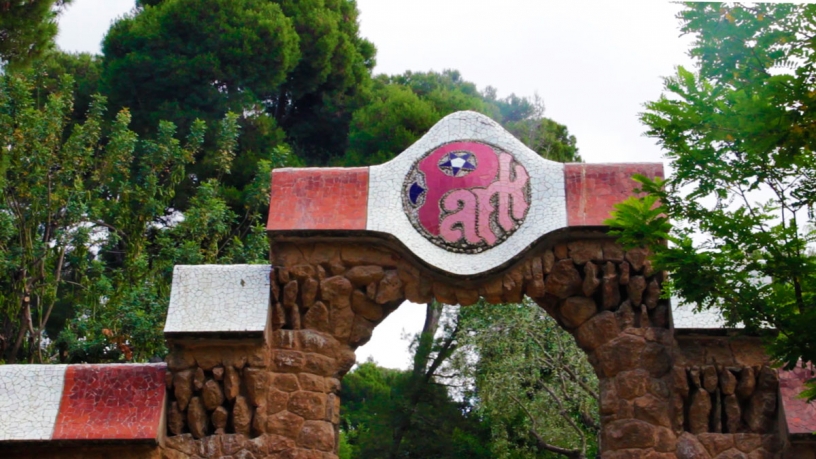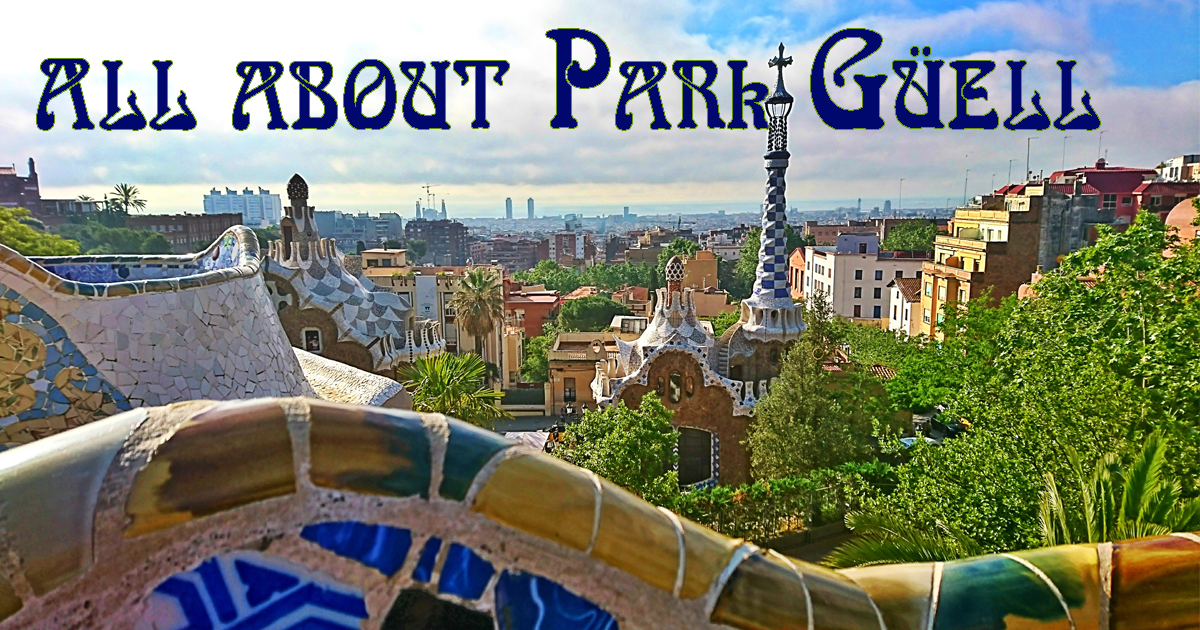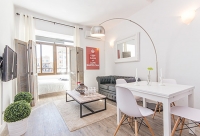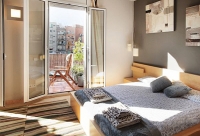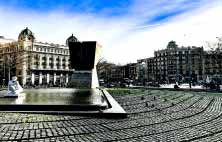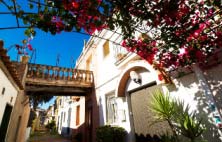1. Video presentation
2. Park Güell Origins
This park was a commission by the businessman Eusebi Güell to the architect Antoni Gaudí i Cornet. The idea was to build an urbanization for rich families in a healthy environment that featured beautiful views. The work began in 1900 and ended in 1914. They began to understand that its remoteness from the city and abruptness of the terrain not only made it difficult to construct, but also to connect with Barcelona. Thus, upon the death of Eusebi Güell, his heirs offered it to the Barcelona City Council, who acquired it in 1922 and opened it to the public four years later.
About the name of the park and why it's in English; the accepted idea is that Eusebi Güell wanted to recreate the English Garden Cities movement, so called it "Park" in English followed by his family name, "Güell". Yet there's another colourfully debatable version that suggests the administrators didn't allow Gaudí to register the name in Catalan, so they avoided putting it in Spanish — pronounced "Par-que Güell". Seeing as 'Park Güell' in English is similar to 'Parc Güell' in Catalan, they went with that.
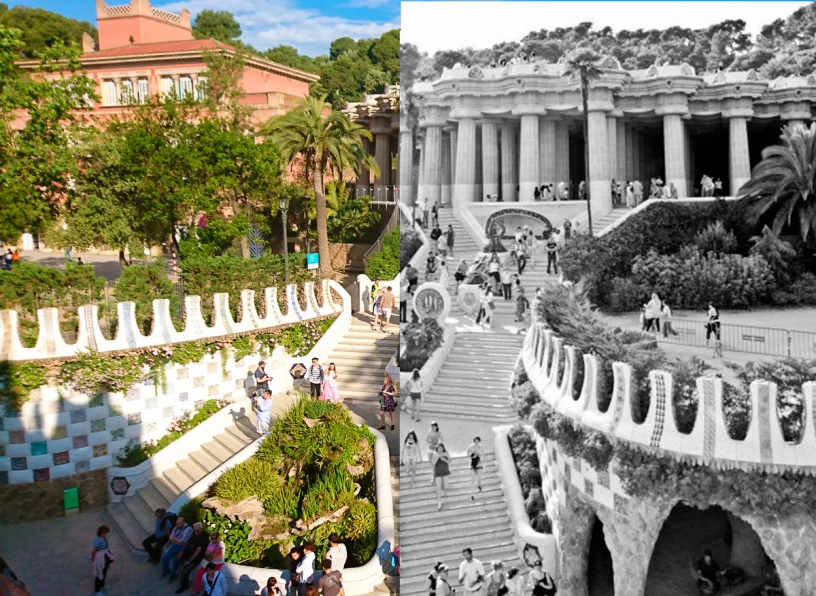
3. Modernist aspects
Imitating nature
Park Güell is the most landscaped work by Gaudí. The Catalan architect was always inspired by organic forms of nature. If we consider the modernism style as a song — an ode to nature — and we take into account the geographic location in which the park is, then we're looking at a perfect man-made adaptation into the surrounding environment.
The construction of buildings, sculptures and roads of Park Güell completely respected the topography of the mountain. For example, the viaducts that run along the complex — he didn't do any levelling and managed to adapt them to the ground, putting some retaining walls where necessary. These walls and pillars that support the roads, are shaped like trunks and palm trees and are made of stone that's the same colour as the land where they stand.
He also took advantage of the 60-metre slope of the mountain to evoke a path of spiritual elevation from the earthly to the divine, which was to have a chapel at the cusp. This wasn't built. In its stead he put a Three Crosses of Calvary monument, which we'll speak about later. The entrance to the park represents the Gates of Heaven — a quiet place where calm was supposed to reign.
The whole park is integrated into nature with the exception of the curiously-called Nature Square. One half of this square sits upon the Hall of Columns (there are 86 columns here, not 100 as many people refer to it…). It must be recognised that the other part of this area is well adapted to the environment. In fact, on one side, there's an excavated hall into the mountain next to the many palm trees that the columns holding it up seek to imitate.
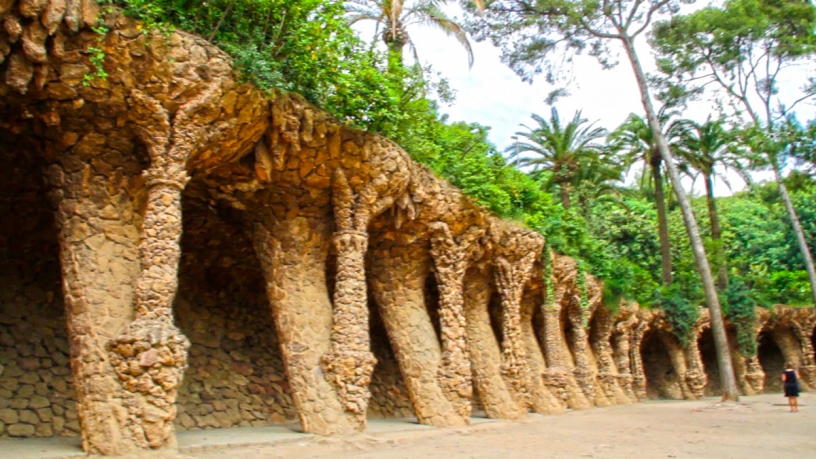
And his homage to nature doesn't end here. Before building the park, this mountain was called the 'bare mountain' (today 'Mount Carmel') because it was so barren at that time. Thanks to the construction of Park Güell, Gaudí introduced a multitude of plants and Mediterranean vegetation that adapted well to the environment. He brought pine, carob trees, oaks, cork oaks, eucalyptus, palm trees, cypresses, olives, figs, almond trees and many other flora that contributed to the growth of wildlife as a consequence.
The curved lines
Park Güell, La Sagrada Familia, everything that Gaudí does through his take on the modernism style, is based on curved forms. According to Gaudí, perfectly straight lines simply don't exist in nature. Thus the curves flow through this park in the same way that they do at the Sagrada Familia. In fact, as a symbol of nature, the supporting columns of the Sagrada Familia are built in the form of tree trunks. According to him, a temple that represents life and death cannot contain straight lines. So you'll not find any.
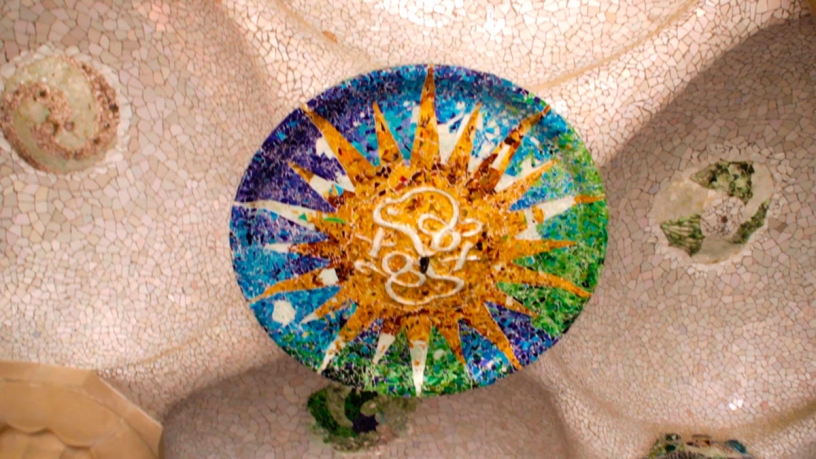
Trencadís
The greatest icon of Antoni Gaudí's Modernism are Trencadís. Trencadís is a mosaic decorative system that consists of coating surfaces with small pieces of broken ceramic, often coming from materials and obsolete objects. This aspect of Gaudí's vision were in fact mostly carried out by his trusted partner — Josep Maria Jujol, a man who deserves an entire article himself.
It's thanks to the Trendacís technique that Park Güell's balcony looks so colourful. Many would say that it was Gaudí who invented this technique during work on another project called Fincas Güell. Modernist sculptors of the time already used ceramic tiles for their works, but it was Gaudí himself who starred in a eccentric anecdote that gave birth to this particular technique.
Anecdote: One day Gaudí went to the workshop to see how they were placing the mosaic pieces. Unappeased with the speed of the project, he took a flower pot, smashed it to the ground and stated: "Place them in handfuls, otherwise, we'll never finish." Which is of course, from the architect behind the Sagrada Familia... Does anyone actually know when that will finish? It's been under construction longer than the Pyramids of Egypt took.
4. Religious or Freemasonic Symbols
Freemasonry is an organisation of rather discrete character that gathers men grouped by lodges. They aim to search for truth under a philanthropic, philosophical and symbolic group without organized religion. It can be considered as a crux of reason, science and / or demystification, against superstition, organized religion and darkness.
Since its conception this society has been persecuted and outed as dangerous, owing to its secret nature. It's no coincidence that its main detractors have been, to a large extent, dictators and organized religions, which see the Freemasons as a "competitor" of sorts over their own loyal followers.
Many important personalities throughout the history of the humanity have belonged to this society. They would have left in their works, perpetuated over years and centuries, messages, signs and enigmas concerning their organisation.
Some famous Freemasons were Winston Churchill, Harry Houdini, Henry Ford and Abraham Lincoln. As a result of the discretion about belonging to this group, it's not unusual that sometimes historians need to actively search to discover a masonic side to historic figures. Such is the case of Gaudí, who, despite being clearly recognised as a faithful Catholic, is attributed by some historians as fitting the Freemason profile. The defenders of this idea interpret from the point of view of his works. And this is what we'll humour next.
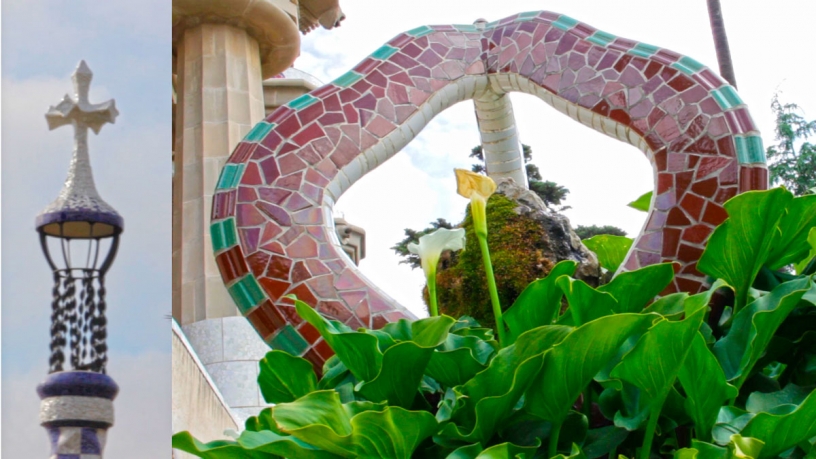
There are details in Park Güell, such as the philosopher's stone — a symbol of alchemy — that's well visible at the entrance staircase. There's the predominance of the number 5 throughout the park, which is the masonic sacred number. These are some things that make some suspect of the true intentions of Gaudí, perhaps camouflaged. Was he in reality a Freemason?
Number five
The park is full of five-pointed stars. Without going into it, they appear in the coat of arms that contains the name of Park Güell. For Freemasons, this number represents order and chaos, the five senses, and the one who has begun his fifth journey. It's also known as the 'Fifth Element', a fifth essence of nature together with the other four elements: earth, water, fire and air. A concept that comes from Ancient Greece's Aristotle, a philosopher in the 4th Century BC who conceptualized a perfect fifth element existing in all things, in his work "On the Heavens".
Philosopher's Stone
The elixir of life and perfection itself in reaching a state of maximum purity. The conversion of metal into gold. This is something that is seen in the stone inside the tripod altar at the top of the park entrance steps.
Number 33
Another curiosity that makes us turn to the conspiracy idea that Gaudí was involved in Freemasonry is that the staircase of the Park Güell has 33 steps. This number symbolises among Freemasons the maximum degree that can be achieved in their hierarchy.
Curiously, at the Sagrada Familia there's a very clear and obvious reference to this number. On the facade of 'La Pasíón' there's a kind of Sudoku in which all sides add up to 33.
Others say this number is nothing more than a Christian number and tribute to the age at which Jesus Christ died. However, Christianity has used many ancient pagan religions and other symbols to transform them to their benefit ... And what if the age that was established for the death of Jesus Christ wasn't so casual?
Crosses
Park Güell is full of crosses. However, many of his crosses are so distinct that there has even been a term coined for them — Gaudiana Crosses. Their main characteristic is that they're crosses of four arms. Each of them points to one of the cardinal points, North, East, South and West, plus the one pointing to the sky… a fifth one. It's interesting that for something as symbolic as the cross, Gaudí moulded it to his style.
5. Animals of the park
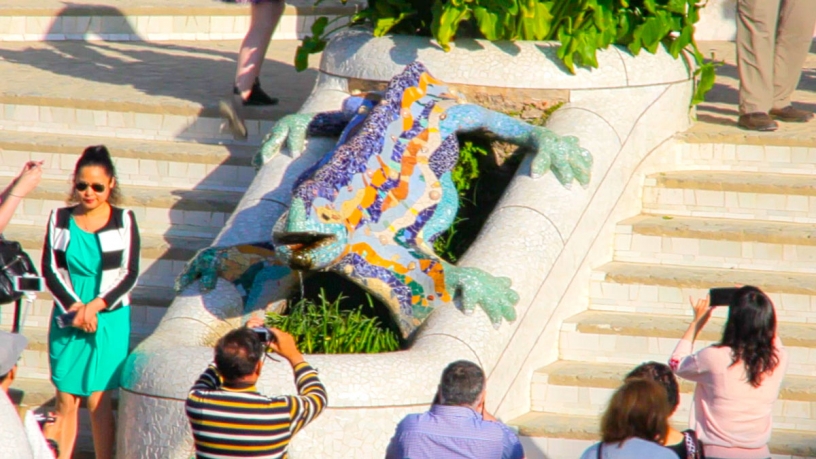
Salamander
Numerous representations of animals are hidden between the walls of this park and its sculptures, but undoubtedly the icon of the park is the salamander that rises prominently on the stairs at the entrance of Park Güell as one of its fountains. It's made of brick that's clad in Trencadís and measures 2.4 metres in length. Some say it represents the alchemical salamander, symbolising fire.
What's evident is that this animal seems to protect or guard the park. That's why some scholars see the salamander as a representation of the mythological Python at the Oracle of Delphi. In Greek mythology, Python was a great serpent born of mud that was trapped on earth after a great flood. He also guarded the oracle, which was in a cave at Delphi on Mount Parnassus. This interpretation, like one about the Hall of Columns, is due to the fact that both Gaudí and Eusebi Güell were admirers of Greek mythology and theatre.
There are also those who claim that the salamander echoes the crocodile that appears on the coat of arms of the city of Nîmes, France, where Güell was raised.
Snake
Another prominent motif that decorates the staircase is the head of a serpent surrounded by the Catalan flag, it's well known that Gaudí was very pro-Catalan.
Some would say this represents the image of the serpent Nejustan, which Moses carried on his staff. For others it's an allusion to the symbol of medicine. Once again, with another animal, the conflictive doubts between religion and science assail.
Lions
On the cornice that overlooks to the outside of the balcony in the superior part of the Hall of Columns, there are gargoyles with form of lion heads. They're part of the drainage system.
Octopus
Located on the ceiling of the Hall of Columns. It's a symbol that refers to the water drainage system that passes through the interior of this roof.
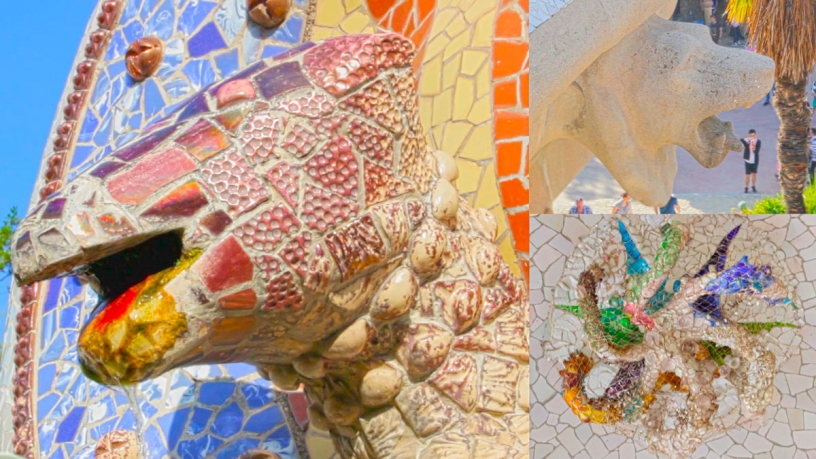
6. Main parts of the park
The park has been divided into two parts. Given the incessant flow of tourism into Park Güell, a capacity limit has been established in the main monumental zone. Next we'll talk about different places that you mustn't miss, inside and outside this zone, and then we'll explain how to access each one of them.
Hall of Columns
It's called the Hipóstila Hall, a name that was known in ancient Greece for these great halls with such an arrangement of columns. This one has become a forest of pillars.
There are columns of 6.16 metres high and 1.20 metres in diameter. Despite there being 86 columns, the initial idea was for there to be 90, but finally Gaudí decided against four of them and in their place put four rosettes of 3 meters in diameter each, representing the 4 seasons of the year, with drawings of 20-tipped suns tips in different colours.
This room was thought to have been the place where a marketplace would have gone. The drainage system runs through the roof of the park, which was represented by an octopus on the roof. Go ahead and look for it in the previous image.
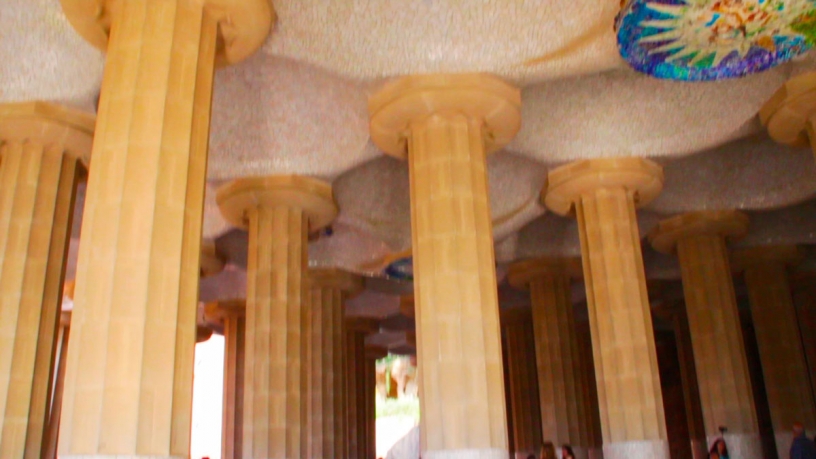
This hydrological system was very well planned and developed. One may wonder why the top, where the balcony is, is unpaved. As it turns out that, it's so that the rainwater can be filtered and thus canalised to an underground reservoir in order to supply the irrigation of the whole park.
When the tank exceeds a limit, the water is expelled through the mouth of the salamander. There must have been a spring, but after the failure of building houses here, Eusebi Güell decided in 1913 to market the water. And here's another conspiratorial fact, the commercialisation of this water was made under the brand name SARVA. Sar and Va are two letters in Sanskrit, initials of Siva and Visnu, Hindu gods, creators, preservers and destroyers of the Universe.
Barcelona Balcony
This is where you usually see photos taken from Park Güell. Not only is it an iconic place in Barcelona, but the views of the city are perfect. It's a 110-metre long snake-shaped balcony that's also an ergonomic bench, designed to perfectly fit the human body.
Curiosity: It's said that Gaudí asked workers to sit down here and in this way the bench was made to fit the body of a person.
Here under Gaudi's project managment, Jujol plays with curved forms and Trecandís. The colours and shapes of these small pieces of pottery are scattered all over the bank randomly and, at times, with some sense too. If you look closely, you'll find signs of the zodiac, stars, fish, flowers and religious motifs. Green, blue and yellow predominate, which for Gaudí represented hope, faith and charity.
On the outside of the balcony you'll find the gargoyles in the form of lion heads that are part of the water drainage system.
This area is known as Plaça de la Natura. Unlike the rest of the park's constructions that mimic nature by forming part of it, this space is built partly on the mountain and partly on the Hipóstila Room that supports it.
This area, then called the Greek Theatre, was intended precisely for that, to be a theatre. And the idea was that the owners of the houses around the estate could see the spectacles directly from their terraces.
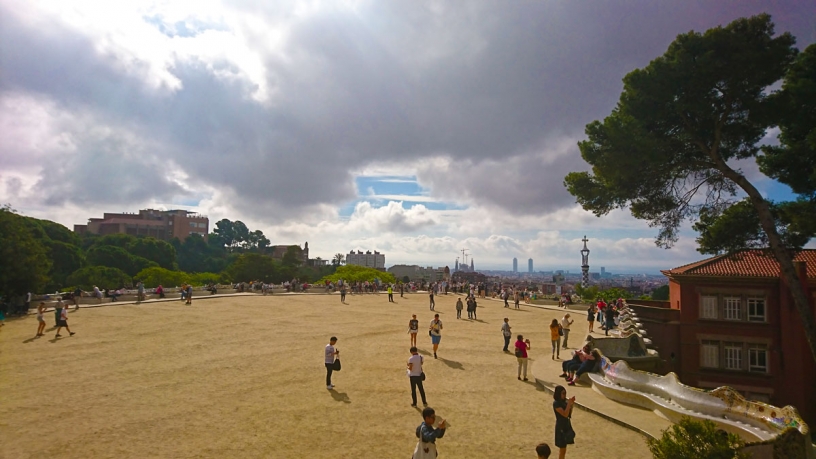
Once the construction of this project was stopped, this space became a stage for many Catalan traditions, such as sardana dances. Before the influx of tourism, it was used by neighbouring schools for children to play and practice P.E classes.
As we said, this balcony offers incredible views of Barcelona. From here you can see — among other things — the most important work of Gaudí, the Sagrada Familia, which began to be built in 1882 and is expected to end in 2026.
Portico of the Washerwoman
The park is defined by a series of viaducts that Gaudí made in such a way so carriages could fit and people could travel through. These are perfectly integrated with the terrain. He adapted them completely and made them so that he didn't break the aesthetics that nature offers.
One particular piece that deserves emphasis is the Portico of the Washerwoman. It's part of the viaduct composed of trunk-shaped columns, made by different artists so that none would be the same. Among them there's a completely different one that has the form of a woman with a head basket.
This column has been interpreted, as always, in two different ways. For some it's a washerwoman who brings laundry and clothes to wash. For others it assumes a bearer of offerings, similar to an Egyptian statuette exhibited in the Louvre museum.
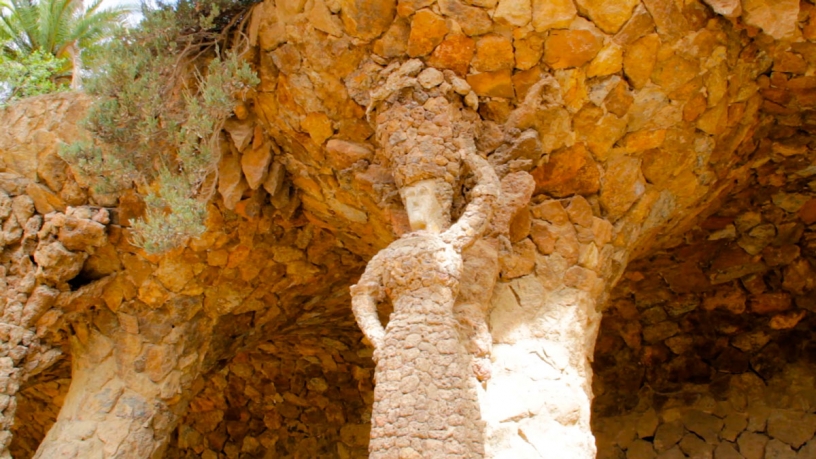
Park houses
Casa Rosa
Built by his apprentice / right-hand man, Francesc Berenguer, and acquired by Gaudí. This was intended to be the pilot house to show future owners of the other hypothetical 59 houses what to expect from the estate. Gaudí lived here between 1906 and 1925. Later he moved to the Workshop of the Sagrada Familia, where he resided until his death. What stands out is the window in the shape of a heart on the top of the building.
The Pavilions Entrance
These were the be the residence of the doorman and administration. These beautiful buildings are inspired by the story of Hänsel and Gretel that at that time was represented at the Gran Teatre de Liceu. A work translated by a good friend of Gaudí and Güell — Joan Maragall.
The one that could have been the house of the doorman, has on its roof a dome in the shape of a mushroom. The other house, now a bookstore and souvenir shop, is crowned by a four-armed Guadí cross, pointing in the four cardinal directions. This cross was destroyed in 1936 and rebuilt after the Civil War.
Casa Trías
Casa Martí Trias i Domènech, one of the few that was bought in the park, looking lonely among the vegetation that surrounds the area. Another interesting point exists with this house. It turns out that the son of the owner — Alfonso was his name — was a medical student. It was he who identified Gaudí after the architect was hit by a tram. At the time of the accident nobody recognised the artist, since he used to dress in a austere way. So, while many left him for dead once they took their time to calmly transfer him to the hospital, it was the son of Martí Trías who sounded the alarm.
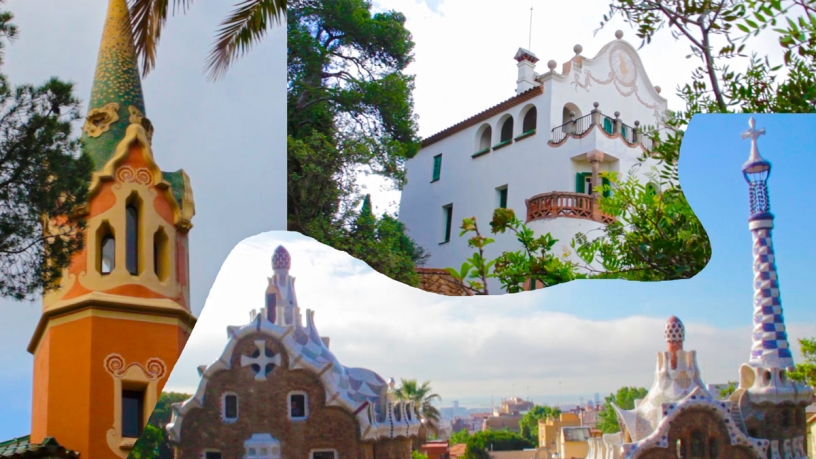
The Calvary
The hill of the three crosses, or El turó de les Tres Creus in Catalan. It's the highest part of the park. Here, Gaudí wanted to build a chapel, but when the works stopped, he decided to build this homage to the Passion of Christ. It should be noted, that there are three crosses, but one is shaped like an arrow pointing to the sky. The sides of the other point directly to the four cardinal points.
Wouldn't you like to have Gaudí next to you for a while to ask about the meaning of all the messages he left behind?
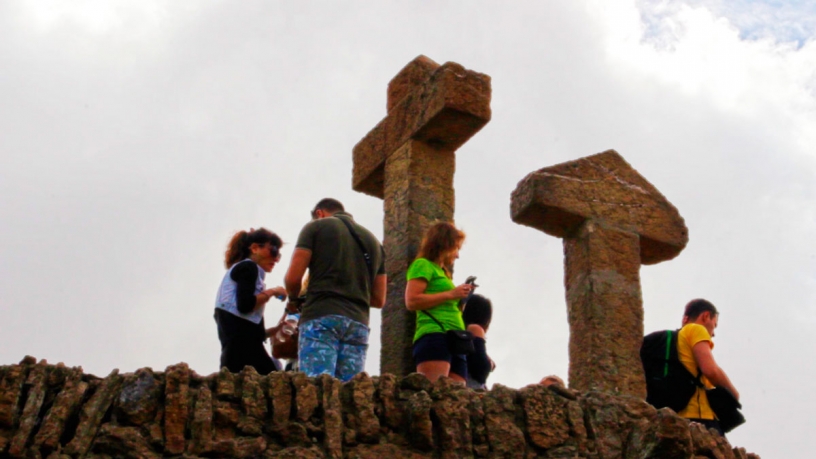
7. Tips for visiting the Park
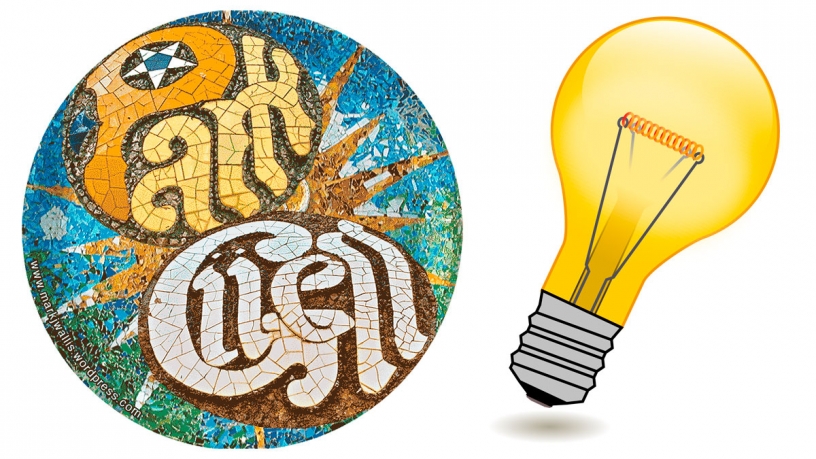
Practical Guide
To visit Park Güell we let ourselves be guided by UnPuzzle Barcelona. It's an online tour that, as a treasure hunt from your mobile, indicates the way to go and explains all the curiosities that you encounter along the way. If you can't find any on your own, they'll make you look for them to create a more rewarding experience in which you will discover all the secrets hidden away in the famous 'Gaudí park'. It's worth making the experience this way.
Book your ticket in advance
It's the first and most important you should do if you intend to visit the park. Some time ago entry was free and you could come and go as you pleased, but the increase in tourists has forced capacity limits and the most popular part of the park now costs €7.
Go early
Don't think that because it's not the weekend you'll find fewer people visiting the park. It's one of the most emblematic places and most visited in Barcelona. That's why there are always lots of people. We recommend that you go during the early hours of the day, because at that time most tourists are still asleep or having breakfast. Arm yourself with courage, get up early and seize the day.
The free area of the park
The part you pay €7 for is where there's the balcony, the staircase and the Hall of Columns. While it's worth seeing, it's also worth not missing the rest of free areas of the park.
Throughout the park, both in the paying and free area, you'll see very clearly the effect of Gaudí's hand on the environment, precisely because everything mimics nature. You can see it through stairs, columns and at the hill of the three crosses that belongs to the free access area... And the best thing is that throughout Park Güell you can enjoy the views. If this park has something nice, it's definitely its views, and those are free.
Accommodation
There are many types of accommodation: Hotels, hostels, campsites... However if you're a sensible tourist who wants to stay in a quiet neighbourhood, our recommendation is that you rent an apartment. You'll feel like at home and you can cook your own food that you can get in one of the markets of the city, while you mix among the people of Barcelona. That's why we have a list of cheap apartments near Park Güell.
How to get there
You can go by metro if you get off at Vallcarca or Lesseps using the green line, but you'll still have to walk. You can also go by car, motorbike or bicycle if you want, but the easiest way is the bus. Two specifically, that'll leave you right at the park gate:
- The 24 bus: You can catch from Plaça de Catalunya and make a tour of Passeig de Gracia, where you can see works like La Pedrera or Casa Batlló along the way. It stops right at the park gate.
- The 92 bus: This bus can be caught from the Maritime area of Barcelona. It passes by the side of the Sagrada Familia and Hospital de Sant Pau. It also drops you right at the gate.
